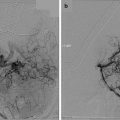Study
Criteria
Recommendations
Harrington et al. (1986) [37]
Five categories:
Based on category:
1. No neurologic dysfunction
(1) and (2): nonoperative management
2. Involvement of bone without collapse or instability
(3): left to judgment of surgeon
3. Neurologic dysfunction without bony destruction
(4) and (5): surgery indicated
4. Vertebral collapse with secondary mechanical pain
5. Vertebral collapse or instability with major neurological deficits
Tokuhashi et al. (1990) [38]
0–2 points for each of the following categories:
Based on total points (0–12):
1. Primary tumor type
≤5: nonoperative management
2. Neurological grade of the lesion
6–8: left to judgment of surgeon
3. Physical condition of the patient
≥9: surgery indicated
4. Number of lesions
5. Presence of visceral lesions
6. Spinal sites
Tomita et al. (2001) [39]
Based on three categories:
Based on total points (2–10):
1. Grade of malignancy:
≤3: wide/marginal excision (long-term local control)
– Slow growth, 1 point
4–5: marginal/intralesional excision (middle-term control)
– Moderate growth, 2 points
6–7: surgery for short term palliation
– Rapid growth, 4 points
≥8: nonoperative supportive care
2. Visceral metastases
– No metastasis, 0 points
– Treatable, 2 points
– Untreatable, 4 points
3. Bone metastases
– Solitary/isolated, 1 point
– Multiple, 2 points
Fourney et al. (2005) [40]
“MAPS” assessment:
Considerations by category:
1. Method of resection
1. En bloc spondylectomy, piecemeal excision, palliative decompression
2. Anatomy of spinal disease
2. Tumor level, location, staging
3. Patient fitness level
3. Comorbidities, irradiation, patient age
4. Stabilization
4. Anterior, posterior, combined
Goals of Therapy
In deciding on the optimal treatment for a patient, the goal of therapy remains a key factor. Goals for surgery in patients with spinal tumors include: (1) neural decompression, (2) biomechanical stabilization, (3) curative resection, (4) control of intractable pain, and (5) diagnosis.
Neural Decompression
The most important indication for surgery remains neural decompression. Ambulatory status is a key prognostic marker for terminal patients with spinal disease [26]. Nonambulatory cancer patients have a mean survival time of only 45 days, due to multiple causes [13]. Maintaining neurologic function in patients with spinal metastases may therefore prolong survival time in addition to improving quality of life.
Patients with rapidly progressive or far-advanced paraplegia, especially for less than 24–48 h, require emergent surgical intervention [8]. In patients with complete spinal cord dysfunction for greater than 24 h or those with bowel/bladder dysfunction, however, surgery offers less hope for improvement and radiotherapy is usually the mainstay of treatment [36]. Patients with progressive neurologic deterioration that is refractory to radiation therapy should also be considered for surgical decompression [36]. Cord compression caused by bone or disk fragments in the spinal canal that may result from pathological fractures should also undergo primary surgical decompression instead of radiation therapy [41]. Recent prospective randomized trials of surgical decompression plus radiotherapy versus radiotherapy alone showed a quality of life benefit in the surgical arm that was statistically significant as well as a trend towards an increase in survival benefit in the surgical arm [42, 43]. These data represent high quality evidence favoring surgical decompression over traditional conservative radiotherapy in patients with spinal metastatic disease.
Stabilization
Maintaining spinal stability is another indication for surgical intervention in patients with metastatic spinal disease. Stability has been defined by Panjabi et al. as allowing the degree of motion that prevents pain, neurological deficit, and abnormal spinal angulation [44]. Spinal instability in patients with metastases can result from related pathologic fractures, surgical intervention, or diffuse changes in bone density and strength. Instability has been correlated with the following findings in patients with spine tumors: two-column injury, vertebral body collapse greater than 50 %, kyphosis greater than 20–30°, or involvement of the same column in greater than two levels [40, 45, 46]. Following most cases of surgical decompression, especially in cancer patients, instrumentation is required to provide stability. In non-terminal patients, postoperative stability is ideally achieved via a solid bone fusion following resection. In cancer patients, however, a bony fusion may not be a realistic goal due to multiple potentially complicating factors. Solid bony fusion may be prevented by shorter patient survival times, anemia, malnutrition, or frequent requirements for further chemotherapy, steroids, and radiation therapy. Although the ability to study spinal fusion in cancer patients has been compromised by decreased follow-up times, one study studying fusion rates in 25 patients undergoing anterior decompression and interbody fusion with bone struts followed by irradiation reported a relatively low pseudoarthrosis rate of 16 % at 1 year following surgery [47].
Several options are currently available for spinal instrumentation in cancer patients. Rigid spinal fixation systems are often used to provide spinal stability [13, 48]. With anterior approaches, constructs are often created to replace the resected vertebral body. Cortical endplate bone integrity must be preserved in order to stabilize anteriorly, however, and loss of integrity may necessitate a posterior fusion or even a combined anterior–posterior approach in cases of significant instability [8]. In posterior approaches, 2–3 levels of construct are generally used above and below the deficit [13, 48]. Polymethylmethacrylate (PMMA) is frequently used for reconstruction in conjunction with mechanical instrumentation if the estimated patient survival time is estimated to be less than 6 months. PMMA may be inserted inside of a titanium cage or chest tube and can provide immediate stability [48, 49]. It has been shown to be a safe option for patients requiring subsequent radiation therapy [50] and is an inexpensive, relatively easy to use, and safe alternative to bony fusion [51].
Curative Resection and Local Control
While a curative surgical resection of spinal metastases was not considered a reasonable goal in patients with metastatic spinal disease for many years, recent series have demonstrated that survival times can be significantly prolonged in particular patients who have undergone surgical intervention [15, 52]. In fact, surgery is the only treatment that has demonstrated a potential for cure of spinal metastases, as opposed to local control of tumor available with radiation therapy [35].
Procedures such as en bloc spondylectomy and vertebrectomy have become key developments in the ability to aggressively treat and even potentially cure localized metastatic spinal disease. Patients with bony metastases as opposed to visceral metastases, and those who present following a long disease-free interval, are considered to have a low tumor burden and may be optimal candidates for curative resection [15, 35, 39, 52, 53]. Such patients may benefit from more aggressive surgical management in terms of pain control and quality of life and should be treated with the intent to cure [35, 52]. The potential for a curative resection also depends on the source of the primary tumor. For instance, tumors of renal origin should be treated with the intent to cure [54]. Furthermore, local malignancies such as chordomas, sarcomas, chondrosarcomas, Pancoast tumors, giant cell tumors, and osteoblastomas should also be considered for curative en bloc resection [13].
Pain Control
Pain from metastatic lesions can be a result of inflammation and mechanical forces, as well as direct nerve compression or damage [31]. Radicular symptoms have been reported in up to 90 % of patients with lumbar epidural cord compression, 79 % of patients with cervical disease, and 55 % of patients with thoracic metastases [24]. Corticosteroids and opioids are the primary medications available for pain management secondary to cord or root compression. Radiation therapy remains the primary intervention reserved for patients with terminal disease who are experiencing significant pain. However, the beneficial effects of irradiation in relieving pain may take up to 2 weeks and may not provide adequate pain relief [55]. In cases where pain is refractory to radiation therapy, surgery remains a viable option. Many surgical procedures offer a significant benefit in pain relief, with recent series reporting pain relief success rates of greater than 90 % [10, 15, 56]. Percutaneous vertebroplasty and kyphoplasty are minimally invasive procedures that have been shown to improve pain in patients who may not be candidates for more aggressive decompressive surgery. Several series demonstrate both short- and long-term pain relief rates of 85–100 % associated with percutaneous vertebroplasty and kyphoplasty [57–60].
Diagnosis
Since the advent of minimally invasive techniques for tumor biopsy of the spine, such as CT-guided and fluoroscopic-guided biopsy, diagnosis is usually no longer a primary indication for surgical intervention. One study reported that a tissue diagnosis was possible in 86 % of patients using CT-guided biopsy [61].
Timing of Combined Therapy
In spite of having recent Class I evidence showing the benefit of surgery in the primary treatment for spinal metastases, radiation therapy remains the primary modality for treatment at many medical institutions. Following a radiologic diagnosis of spinal metastases, many patients are directly referred for radiation therapy without a surgeon seeing the patient [62]. The results of this are twofold. First, opting for radiation as a primary measure may not provide the same survival benefit for the patient as a wide marginal or radical excision could potentially provide. Second, patients who fail radiotherapy and ultimately require surgical decompression have significantly higher chances of developing wound infections, especially in cases where irradiation was administered within 1 week prior to surgery [62]. One series of 85 patients undergoing posterior decompression with or without instrumentation determined that patients with prior irradiation had a 32 % chance of developing wound infections, compared with a 12 % chance in the de novo surgery group. Multiple other studies have demonstrated similar results [34, 35, 43, 62, 63]. For these reasons, many surgeons currently advocate considering de novo surgery as the primary intervention for symptomatic metastatic spinal disease and have emphasized the spine surgeon’s involvement in the decision to irradiate patients.
Deciding on a Surgical Approach
Once surgery has been decided upon, choosing the correct surgical approach is a key factor in providing the ideal degree of exposure for resection and subsequent stabilization. This decision is based on the anatomical location of the spinal metastases, the degree of surgical intervention a patient is able to tolerate, and the ability of the surgeon to perform a particular procedure safely. The Weinstein, Boriani, and Biagini staging system can be used to help guide surgeons in choosing an approach for surgical decompression based on the anatomical location of the tumor in regards to proximity to the dura as well as anterior to posterior localization [64]. This system maps tumors based on 12 radiating zones in a clockwise fashion, as well as five concentric layers. It can assist in deciding on a type of excisional procedure, including en bloc spondylectomy, vertebrectomy, sagittal resection, and posterior arch resection.
Decompressive Posterior Laminectomy
In the past, the primary surgical procedure utilized by neurosurgeons to relieve compression secondary to spinal metastases was the posterior laminectomy. This procedure was initially favorable because it could be performed by the majority of neurosurgeons within relatively fast time frames. For several reasons, however, this procedure fell out of favor for the primary treatment of spinal metastases. Class I evidence from a case-control study comparing decompressive laminectomy plus radiation therapy with radiation therapy alone did not show a significant functional benefit in ambulatory status following surgical intervention [30]. Class II and III evidence also failed to demonstrate significant functional benefits or improvement in pain [16, 24, 29, 65]. The inability of posterior procedures to provide adequate decompression in any cases has been largely attributed to the majority of metastatic lesions being located anterior to the thecal sac. Retraction of the thecal sac would thus be necessary to complete a gross total resection from a posterior approach in the majority of patients with metastases. In addition, the risk of spinal instability is especially concerning following laminectomy in cancer patients with preexisting disease in the anterior and middle spinal columns [10, 32]. Decompressive laminectomy is now primarily reserved for metastatic lesions located within the posterior spinal elements or in cases where patients cannot tolerate a more complex circumferential approach. In contrast, posterior laminectomies remain the procedure of choice for the majority of intradural extramedullary and intramedullary primary (nonmetastatic) lesions.
Some surgeons maintain that even patients with ventrally located neoplasms can be adequately and safely decompressed with posterior laminectomy if internal fixation is used in conjunction. This practice has been reported to realign the spine as well as distract the vertebral bodies out of the spinal canal [66]. This procedure remains a useful option in patients who are unable to undergo more extensive anterior approaches or for patients with multilevel disease [67].
Newer Approaches for Spinal Cord Decompression
Multiple studies have been published describing the efficacy of various circumferential approaches for pain relief and preservation or improvement of neurologic function [10–12, 15, 32, 45, 68–70]. Overall, the proportion of ambulatory patients who retained ambulatory function postoperatively (defined as the “success” of such a procedure) has ranged between 72 and 98 %, but has been reported as lower when looking at only posterior approaches [71]. The proportions of nonambulatory patients who regained ambulatory status postoperatively (defined as a “rescue” procedure) have been less consistent, ranging between 0 and 94 % in these series [71]. Finally, surgical morbidity rates for circumferential decompressions have ranged between 7 and 65 %, and mortality rates have ranged between 0 and 31 % [71]. The majority of series report mortality rates of less than 10 %.
Approaches to the spine can be broadly classified as anterior or posterior. Anterior approaches include traditional anterior cervical approaches, transthoracic, and transperitoneal approaches. Posterior approaches include traditional laminectomy and posterolateral approaches such as transpedicular, costotransversectomy, and lateral extracavitary (LECA) approaches. All of these approaches require subsequent reconstruction and stabilization.
Anterior Approaches
In general, an anterior approach is preferable for achieving adequate decompression in patients who are able to tolerate such an approach because spinal metastases tend to localize to the anterior spinal column. In general, series of anterior procedures demonstrate superior rates of neurologic function and survival times than do posterior procedures [10, 13, 66]. In addition to decompression, reconstruction of the vertebral body following resection is also facilitated by an anterior approach.
In the cervical spine, reconstruction following an extensive resection is accomplished using bone autograft or allograft, PMMA, or one of many titanium cages or spacers [72]. Stabilization is then usually achieved by way of anterior instrumentation, with plating being the most common technique in the cervical spine. In the thoracic spine, a transthoracic approach can be utilized for anterior decompression and subsequent instrumentation. The side of approach is based on the symmetry of disease, but the left side is often preferable in order to avoid the liver and to more easily identify the aorta. Rib resection, lung deflation, and chest tube insertion are hallmarks of this procedure at the thoracic level [41]. An anterior approach at the thoracolumbar junction (T11–L1) can be done via a thoracoabdominal approach. At this level, a portion of the diaphragm requires mobilization in order to achieve adequate exposure. At the lumbar level, dissection via the retroperitoneum is required, usually along the transversalis fascia. The psoas muscles and aorta are mobilized to provide exposure to the lumbar vertebrae [41].
Posterolateral Approaches
Lesions located in the posterior spinal elements should be approached in this fashion. Patients who may not be able to tolerate a more extensive anterior approach, or those with multilevel disease, may benefit from posterior decompression with stabilization. Finally, particular regional nuances may contribute to the decision to approach posteriorly. The disadvantages of a posterior approach include limited anterior exposure with limited tumor resection and higher rates of wound complications [48].
The cervicothoracic junction (C7–T4) marks a transition zone from the mobile, lordotic cervical spine to a rigid, kyphotic thoracic spine. The hardware failure rates with surgical decompression and subsequent instrumentation in this region are comparatively high, with two series reporting stabilization failure rates of 36 % [73, 74]. Le et al. advocate a posterior/posterolateral approach to the cervicothoracic junction because of lower incidences of hardware failure.
The transpedicular approach can be used for disease in the dorsal and anterior elements of the vertebrae. The advantages of using this approach over an anterior approach include early identification of the spinal canal, ability to resect tumor in the posterior elements, and the ability to provide long segment fixation [69, 75].
A costotransversectomy allows resection of the lamina, facet, transverse process, pedicle, rib head, and some of the vertebral body to provide adequate exposure. Advantages of this procedure include avoidance of a thoracotomy in patients who may not be able to tolerate one, access to multilevel or discontinuous spine disease, and the ability to perform both anterior and posterior fixation. Disadvantages with this procedure include a possibly limited or indirect exposure, possible entry into the lung space requiring chest tube placement, and possible injury to the nerve roots or dura resulting in a CSF fistula.
The LECA approach can be used for spinal decompression and fixation in the thoracolumbar spine (T4–L3) and provides good lateral exposure to the vertebral column without violation of the pleural or abdominal space or mobilization of the diaphragm [76]. Like the costotransversectomy, both anterior and posterior fixations are possible with the LECA. It is commonly used in patients requiring near complete resection of 1–3 vertebral bodies. Reconstruction of the vertebral body is then performed followed by posterior with or without anterior fixation [76].
Combined Anterior and Posterior Approaches
While providing the benefit of excellent exposure to the relevant elements of the spinal canal, anterior decompression also carries the potential drawback of decreased spinal stability. Several series report using anterior decompression with subsequent posterior instrumentation to further stabilize the spinal column [12, 32]. Particular indications for this combination approach include involvement of metastatic disease in all three spinal columns, significant instability, marked kyphosis, involvement of more than one vertebral body, junctional site involvement, and prior laminectomy [12, 32]. One study including 110 patients undergoing spinal decompression determined that approximately half (48 %) of all patients undergoing decompressive surgery required a combined anterior–posterior approach for added stability [12].
En Bloc Spondylectomy
In recent years, aggressive surgical resection of spinal metastases has made curative resection of spinal metastatic lesions a possible outcome. As mentioned, patients with solitary bone metastases or oligometastatic disease can be treated with intent to cure if the patient is a surgical candidate for an aggressive surgical procedure. Patient selection is especially crucial when evaluating patients for an en bloc spondylectomy, as this procedure tends to be long and complex with relatively significant blood loss and a frequent requirement for an open thoracotomy, significant reconstruction and sacrifice of neural and/or vascular structures [35]. Surgical planning in terms of approach and degree of resection has been greatly emphasized, with some surgeons favoring the use of a staging system such as the Boriani/Weinstein system in planning this type of procedure.
Results from recent series of en bloc resections show promising results. One such study reported a mortality rate of less than 1 %, a morbidity rate of less than 10 %, and a mean survival time of greater than 3 years with 48 % of patients showing neurological improvement [35]. Pain improved following surgery in 95 % of patients following surgery, with 76 % achieving total pain control. Another recent series of patients undergoing en bloc spondylectomy demonstrated morbidity and mortality rates less than 1 % [15].
Once an en bloc spondylectomy or vertebrectomy has been performed, vertebral body replacement or reconstruction is necessary to provide stabilization. There have been many materials and implants used to replace the vertebral body following vertebrectomy that have been described in the literature, including allograft, bone cement, ceramic, ceramic/glass, carbon fiber, and titanium spacers or cages [77]. Recently, expandable cages have been developed for replacing the vertebral body and disks. Such cages may offer a benefit because they can be placed through smaller access site and expanded in situ to restore anterior column height.
Stay updated, free articles. Join our Telegram channel

Full access? Get Clinical Tree








